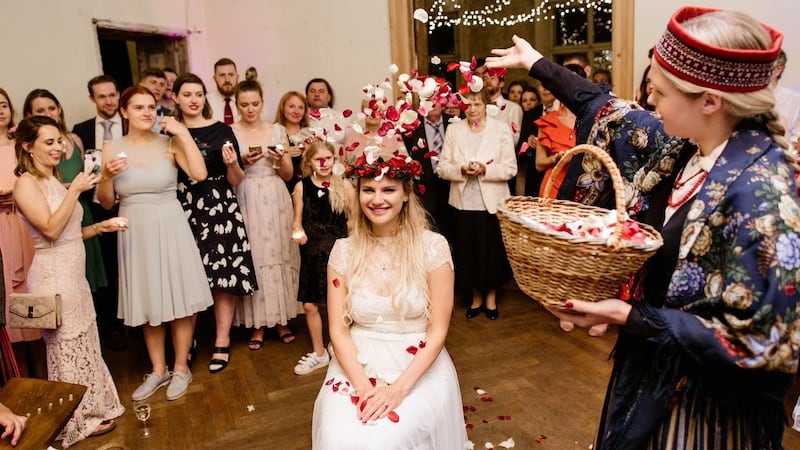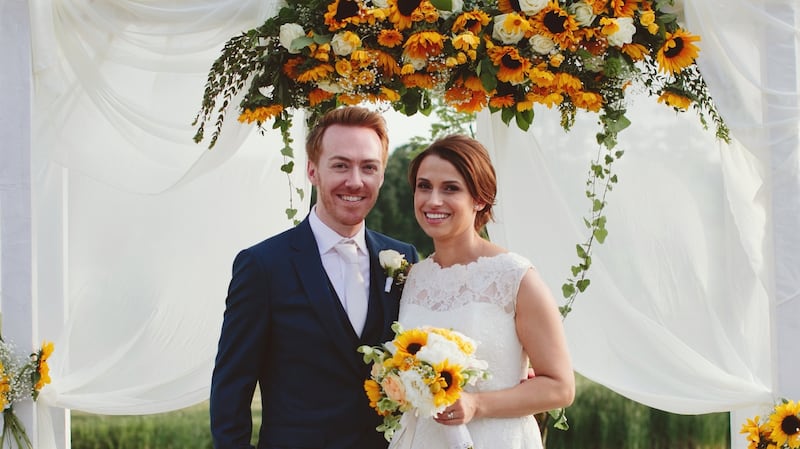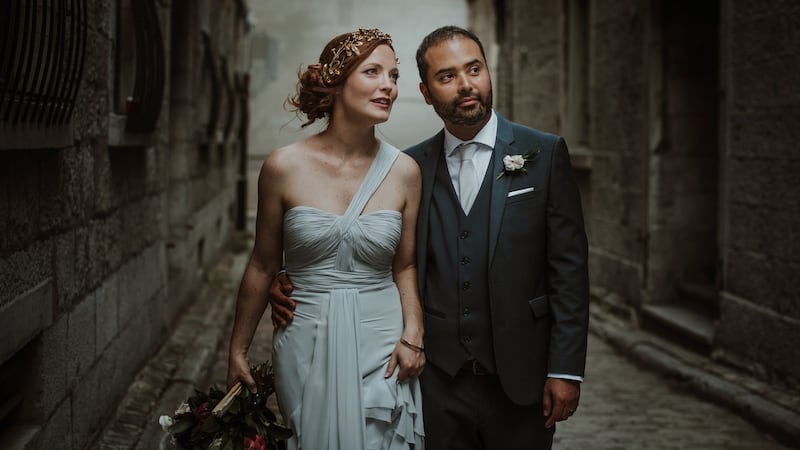It's the time of the year when wedding celebrations are in full flow in Ireland, with most following a familiar formula . But what unusual and surprising traditions can you expect if you're invited to a wedding overseas?
We asked Irish Times Abroad readers to share their experiences of weddings they have been to outside Ireland, and how they compare with Irish traditions. Here are a selection:
Fionnuala Zinnecker, Germany: ‘The bride often gets “kidnapped"'
In October 2006 I married a Bavarian man. As we were living in Germany, we chose to marry there rather than in Ireland. Many customs and norms around marriage here arose which I found strange, wonderful and confusing. Being engaged isn’t a big thing here nor is the wedding itself. The wedding and engagement ring is one and the same thing. In some areas there is a mind of engagement party called a “polterabend”. Guests bring plates, cups and other ceramics, which the happy couple smash and at the end of the night they have to clean up the mess of it all together. If marrying in a church, a prior registry office wedding is required. The couple generally walk into the church together. There are no bridesmaids or groomsmen as we know them in Ireland. At the reception there is a big cake buffet in the afternoon. Later in the day the bride often gets “kidnapped” by members of the groom’s family and removed from the venue for several hours the groom has to search for her. This all takes the form of a pub crawl for the guests.
Darragh Groeger, Denmark: ‘If the groom leaves the room, all the men line up to kiss her’

The Danes are great for wedding traditions. I brought a whole contingent of Irish here - long before we ever intended to move here - and the visitors took the local traditions on board wholeheartedly. If the bride leaves the room to use the bathroom, every woman in the room runs up and gives the groom a kiss on the cheek. Same goes for the bride – if the groom leaves the room, all the men line up to kiss her. Other cues include tapping your cutlery on the plate (everyone joins in and it means the couple needs to stand on chairs and kiss), which is soon followed by everyone stamping their feet (meaning the couple climbs under the table and kiss there). The daftest tradition and easily my favourite is this one – after the first dance ends, the men of the party lift the groom up into the air, take off his shoes and cut his socks off. Some guys even jokingly paint their toenails as they know it’s coming. Explanations of this particular one are a little nuanced, and partly based on older expressions about “walking on your “married feet’” or as a way of “clipping his heels”.
Lisa McNamee, Riga, Latvia: ‘Irish guests were suspicious when faced with the prospect of a paid host’

Attending my best friend’s wedding in Riga, there were quite a few differences from a traditional Irish wedding. Firstly, she had hired someone to entertain the guests throughout the wedding day as is usual in Latvia. The Irish guests were suspicious when faced with the prospect of a paid host. She was a childrens’ TV presenter with pink streaked hair who injected fun and a certain silliness into proceedings from the start. It didn’t feel patronising, but got everyone talking and laughing early on. The Latvian guests explained that this was needed here because unlike the Irish “who would talk to a shoe”, Latvians needed a little more encouragement to mingle. The day combined Pagan and orthodox Christian traditions, including a highly elaborate ritual at the end of the night (pictured). A rose crown was placed on the bride’s head, and she was seated in the centre of a large circle. Guests dressed as peasants sang and played music around her, the crowd were given rose petals to throw over her. Though we couldn’t understand the Latvian lyrics, there was clear meaning conveyed during the ritual, of the changing status of bride to wife. The crown of flowers was removed at the end of the songs and replaced with a (it has to be said, less flattering) married woman’s headscarf. There were other traditions that we didn’t get to see acted out, as they have somewhat lapsed in modern times. On a Latvian wedding day, the bride can be stolen and held for ransom. Other guests joked that though this was increasingly rare, you would still have the occasional messer who’d run away with a bride for a few hours. The Irish bridesmaids maintained a close watch on the bride in case someone was feeling overly traditional.
Shane Kerr, London: ‘Most guests arrive with flowers for the bride’

My wife is originally from Romania and we got to celebrate and mix both wedding cultures with two weddings last year. We had a a civil ceremony in Romania and a Church service in Dublin. They were the best days we could have ever asked for (We also discovered if we can survive planning two weddings, four weeks apart, in two countries - when we didn't live in either of them, then we will survive anything!). After Irish weddings, guests often get asked "Where was it?" but in Romania they get asked "How was the food? How was the music?" The party is minimum eight hours with five courses of food and the band playing for 45 minutes or more between each course. You eat-dance-eat-dance. We had traditional dancing mixed with international music from an incredible local band and the dancefloor was constantly full. It was brilliant to see all the nationalities taking part in the Romanian hora dance. A real highlight was when my wife's Romanian friends surprised us with some Irish culture - they hired professional Irish dancers to perform and then joined the professionals themselves for an amazing choreographed routine of Riverdance. One speciality of Romania is their local wine. My in-laws used to own a vineyard and produced homemade wine and liquor for the day, which was a great personal touch. Another nice peculiarity of Romanian weddings is that most guests arrive with flowers for the bride, so a sea of bouquets ends up forming around the top table. I discovered so many fascinating differences between our national wedding traditions, but the final one to mention is during their church ceremony there's a segment where the bride and groom (get to) wear golden crowns . I unfortunately didn't know this when we decided to do the civil there and church one in Ireland.
Donnacadh Hurley: ‘They sliced off small chunks off the carcass and ate them’
I was invited to a wedding in Addis Ababa, Ethiopia. The alfresco meal afterwards was in a small park. After a while I noticed half a bullock was hanging from a tree. Resplendent in its rawness, there was some blood dripping from the half-carcass. What in God's name is that for, me thought. But was too polite to ask. Then at a certain moment the men gathered and enlightened me. Not in words but deeds. Many of them had these small sharp knives with them and curved scalpels. They sliced off small chunks off the carcass and ate them. When pressed I politely declined. It was 30 years ago, but the memory won't fade.
Lorraine Jones, Whakatane District, New Zealand: ‘You can be married by your best friend if you like’
Originally from Mayo, I now live on the east coast of New Zealand. This year I became a marriage celebrant, which means I perform wedding ceremonies. One thing the kiwis do is pay for all the alcohol and food for the wedding day. Weddings where I live range from very casual with flip flops and shorts on the beach to more formal weddings where the receptions are held at a club house, marquee or Marae (traditional Maori meeting house). Ceremonies take about 20 to 30 minutes. People in Whakatane take a relaxed approach to their wedding day. Anyone can become a celebrant so long as they’re a citizen so you can be married by your best friend if you like.
Nicola Dunne, Vancouver, Canada: ‘I embraced this freedom and the chance to pass on the Child of Prague’

Born in countries more than 5,000 miles apart, my husband and I were grappling with where to marry within days of our engagement. Sam had immigrated to Canada from Mexico as a child and met me in Vancouver eight months after my arrival from Dublin. Considering the distances involved and the scattering of our family and friends, the decision eventually came down to looking at a map. We settled on Montréal, a city we had never visited and knew little about. Our reasoning? It was sort of in the middle and neutral territory. We wouldn't have to resort to choosing one of our home cities or one set of family and friends over the other. Having a destination wedding also liberated me from the traditions of typical Irish weddings. I embraced this freedom and the chance to pass on the Child of Prague, pre-ceremony pints, Catholic mass, and a beef or salmon dinner. Organising a wedding in a city I didn't know from 3,000 miles away had its challenges, not least having to dust off my French language skills and navigate Québécois bureaucracy. A written notice of our intent to marry had to be posted in Quebec for 20 days before our wedding date. The location naturally led to an intimate gathering with 35 guests on a museum rooftop overlooking Notre-Dame Basilica, which transposed the Canadians to Europe and reminded the Irish of Paris. The novelty of the francophone culture and quaint charm of Old Montréal had put all our guests in holiday mode and ensured it was a memorable event for everyone.
Sarah Lynch, US: ‘ I was the only one not crying (trying desperately not to laugh) during the vows ’
The vows here in the United States can get ridiculous. While I wholeheartedly approve of the wide acceptance of secular ceremonies and, with them, personalised vows, sometimes I don't want to know that much about the couple's relationship. Most can't get through them without bawling their eyes out. At one wedding, I think I was the only one not crying (trying desperately not to laugh) during the vows. One of the guests had to walk around with a box of tissues for everyone. At another, the groom (an ex-serviceman) read a poem for his vows that effectively said "I love you but you'll never understand me like my fellow soldiers. I love them the most, but you get what love I have left over". That marriage did not last long despite everyone in attendance (except me) weeping and saying how beautiful the vows were.
Sean Connolly, Puebla, Mexico: ‘The bride and groom started doing a horseriding performance’
I went to my girlfriend’s brother’s wedding in Puebla, Mexico. It was a traditional Mexican wedding and was very different from Irish weddings. The dress code was casual traditional dress - so men wore wrangler shirts and jeans or slacks with shoes. Only the groom and bride dressed fancy. The service at the church was quite similar, however, it moved a bit quicker with none of the waiting around for bride. Also the groomsmen and bridesmaids, all linked in pairs, entered into church together before the bride . The groom sat at the front on his own. The reception was in a ranch/hacienda type place in country. We arrived and had some drinks outside in a garden, and then bride and groom started doing a horseriding performance that they had been specially trained and prepared for their wedding day. The performance was to music, a synchronised kind of thing. As as soon as we sat down food started arriving. It was five courses, very quick service and everyone was given the same unless you were vegetarian or coeliac. The bride and groom sat on their own at a table, and everyone else sat at bigger tables with family and friends. There was a post box beside the bride and groom’s table for contributions. We were encouraged to leave an anonymous donations. My girlfriend’s gift was the band and family are the ones who contribute to the cost of the wedding while other guests are not put under any pressure to give a gift as is customary at an Irish wedding. The bride and groom’s first dance is followed by the rest of immediate family , and then the party started with free tequila everywhere and loads of mad dancing. They brought out food (tacos) at 2am and everyone sat down, ate and the party kept going until 5 /6am. The biggest difference was the free party with anonymous voluntary contributions, no drawn out speeches or waiting for food for ages and just better craic to be honest.






















